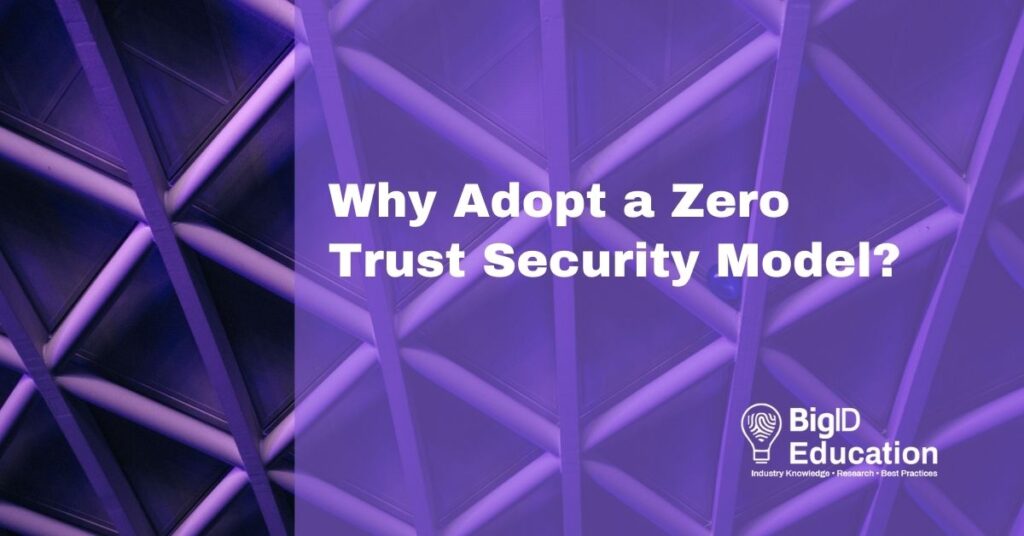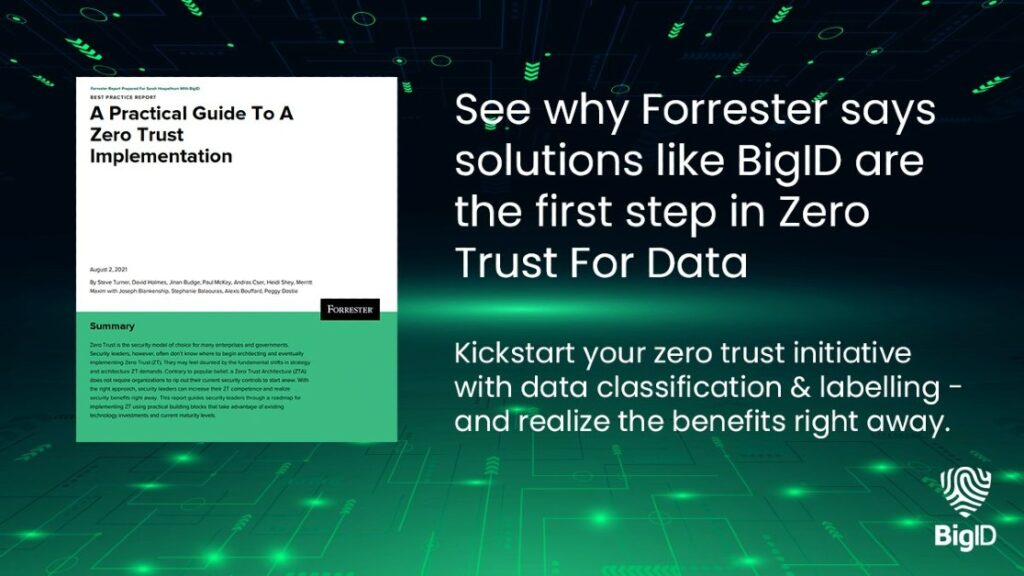Never trust; always verify. This precept lies at the core of the cybersecurity approach known as Zero Trust — a framework that is rapidly supplanting the traditional “trust but verify” network security model.
What Is Zero Trust?
Created by a Forrester analyst in 2010, the Zero Trust model is what Forrester now calls the “security model of choice for many enterprises and governments,” and it is continuing to gain momentum.
Over half of IT decision-makers (59%) are currently deploying a Zero Trust security strategy — and of the remaining minority, 79% plan to adopt the model at some point in the future.
Zero Trust Principles
A zero trust security model operates on the principle that all users, devices, and applications are potential threats to the company. This means that every request for access is thoroughly evaluated before access is granted or denied.
This evaluation is based on factors such as role-based access controls (RBACs), the origin of the request, the timestamp, and user behavioral analytics to ensure that the request is legitimate. This approach ensures that only authorized access is granted, and potential security threats are identified and mitigated.
A traditional approach to network security, which focuses on defending the perimeter, is no longer sufficient for modern corporate cybersecurity. A zero trust security policy, on the other hand, implements microsegmentation to create perimeters around specific assets within the network.
This allows for thorough security inspections and access controls to be implemented at these boundaries, making it more difficult for threats to move laterally and for breaches to occur. This approach enables faster containment and isolation of security incidents.
What Is a Zero Trust Architecture?
A Zero Trust Architecture aims to enhance systems of implicit trust by requiring continuous verification that access is secure, authorized, and authenticated.
All users — within a company or outside of it, onsite or remote — must be continuously authenticated and validated to maintain access to a company’s on-prem, cloud, or hybrid networks.
Organizations accomplish this by implementing sophisticated technologies and strong authentication methods such as multi-factor authentication (MFA) and single sign-on (SSO) — as well as security controls around data, like encryption.
Zero Trust Security Benefits
Enterprise data is expanding and changing all the time — and that expansion poses risk to individuals and organizations. Increasingly, security professionals are looking to implement a Zero Trust model to enable their organizations to:
- enact digital transformation
- protect enterprise data as it grows exponentially
- prevent malicious attacks and security breaches that are becoming more sophisticated every day
With more than 80% of malicious attacks involving credentials, companies cannot afford to rely on outdated methods of authentication or let high-risk data access issues go unmonitored. Organizations need to leverage information like user identity, credential privilege, and incident detections to make decisions and define policies around who they grant access to. In order to leverage this info, they need to first gain visibility into it.
Zero Trust Use Case
One of the most common use cases for zero trust is in the realm of cloud computing, where organizations are looking to secure access to their cloud-based resources. By implementing multi-factor authentication, micro-segmentation, and advanced analytics, organizations can ensure that only authorized users and devices are able to access their cloud resources, reducing the risk of a data breach.
Another common use case for zero trust is in the healthcare industry, where organizations need to protect sensitive patient data. By implementing zero trust principles, healthcare organizations can ensure that only authorized users and devices are able to access patient data, reducing the risk of a data breach and maintaining compliance with regulations such as HIPAA.
In the financial industry, zero trust can be used to protect against fraud and ensure compliance with regulations such as the Payment Card Industry Data Security Standard (PCI DSS). By implementing multi-factor authentication and advanced analytics, financial organizations can ensure that only authorized users and devices are able to access sensitive financial data, reducing the risk of fraud and maintaining compliance.
Zero Trust Network Access vs VPN
Zero trust network access (ZTNA) is a modern approach to network security that is gaining popularity as a replacement for traditional virtual private networks (VPNs). While VPNs focus on creating a secure connection between the user and the network, ZTNA focuses on ensuring that only authorized users and devices are granted access to the network, regardless of where the user is located.
This is achieved by implementing multi-factor authentication, micro-segmentation, and advanced analytics to verify the identity of users and limit access to resources based on that identity. One of the key benefits of ZTNA over VPN is that it allows for more granular access control, making it more difficult for attackers to move laterally across the network once they have breached a single segment.
Additionally, ZTNA also allows for faster detection and response to suspicious activity on the network, reducing the impact of a successful attack. Another benefit of ZTNA is that it allows for a more flexible remote working experience, as users can access the network from any location without needing to be connected to a VPN. This can increase productivity and employee satisfaction, while also reducing the burden on IT to support and manage VPN connections.
How to Implement Zero Trust
To enact an effective Zero Trust model, decision-makers need to evaluate their cybersecurity environment and implement technology that will allow them full visibility into their data and systems.
A standard Zero Trust implementation framework involves protecting users, devices, workflows, networks — and ultimately data. To know what you need to protect in the first place, you must know your enterprise data and be able to define, identify, and classify it according to its sensitivity level.
What Do Most Organizations Overlook in Their Zero Trust Model
Organizations may overlook several key elements in their implementation of a zero trust model, including:
- Inadequate identity and access management: Organizations may not have proper controls in place to verify the identity of users and devices before granting access to network resources.
- Lack of visibility and monitoring: Without proper monitoring and visibility into network traffic, organizations may not be able to detect and respond to suspicious activity.
- Failure to properly segment the network: Without proper segmentation, it can be difficult to limit the spread of a potential compromise and protect sensitive data.
- Lack of regular security assessments: Regular security assessments can help organizations identify and address vulnerabilities in their environment.
- Not considering cloud and mobile devices: Zero Trust model should also be applied to cloud and mobile devices, which can access sensitive data and can be used as an entry point to the organization’s network.
- Not having an incident response plan in place: Zero trust model should have an incident response plan in place to respond to any breaches or attack that occurs.
BigID’s Approach to Zero Trust
At the end of the day, Zero Trust is all about the data. It focuses on enforcing a least-privilege approach to minimizing access and risk, which ultimately mitigates the impact of a potential security incident. This all starts by knowing where your most sensitive and critical data resides.
With BigID, organizations implementing Zero Trust can identify and remediate high-risk data access issues at scale — at the enterprise level, for third parties, for remote workers accessing cloud resources, and more.
Discover, classify, and define all your data — everywhere. Identify which of your data is sensitive — and where that sensitive data is located. Know what data needs to be protected, including highly regulated and valuable data that can drive the business forward.
Understand your data, including its context, business value, lifecycle, purpose of use, data quality, and the threats and risks that surround it.
Uncover and lock down overexposed data. Identify overexposed user access and overprivileged data. Prioritize and enable the right actions for vulnerable, sensitive data — and get full visibility into it to mitigate risk and meet regulatory compliance.
Protect your data with access control policies, data remediation and retention workflows, risk scoring capabilities, and accelerated incident response planning.
Top business cases for adopting a Zero Trust strategy include protecting customer data (63%), adopting a uniform security approach (51%), and reducing internal breaches (47%). The top two reasons that IT professionals cite are improving risk management (75%) and securing remote access (65%) — followed by such factors as reducing breach incidents and lowering costs.
What are your organization’s top needs? See how BigID can help you reach those goals — and protect your data with Zero Trust. Schedule a demo to learn more.



